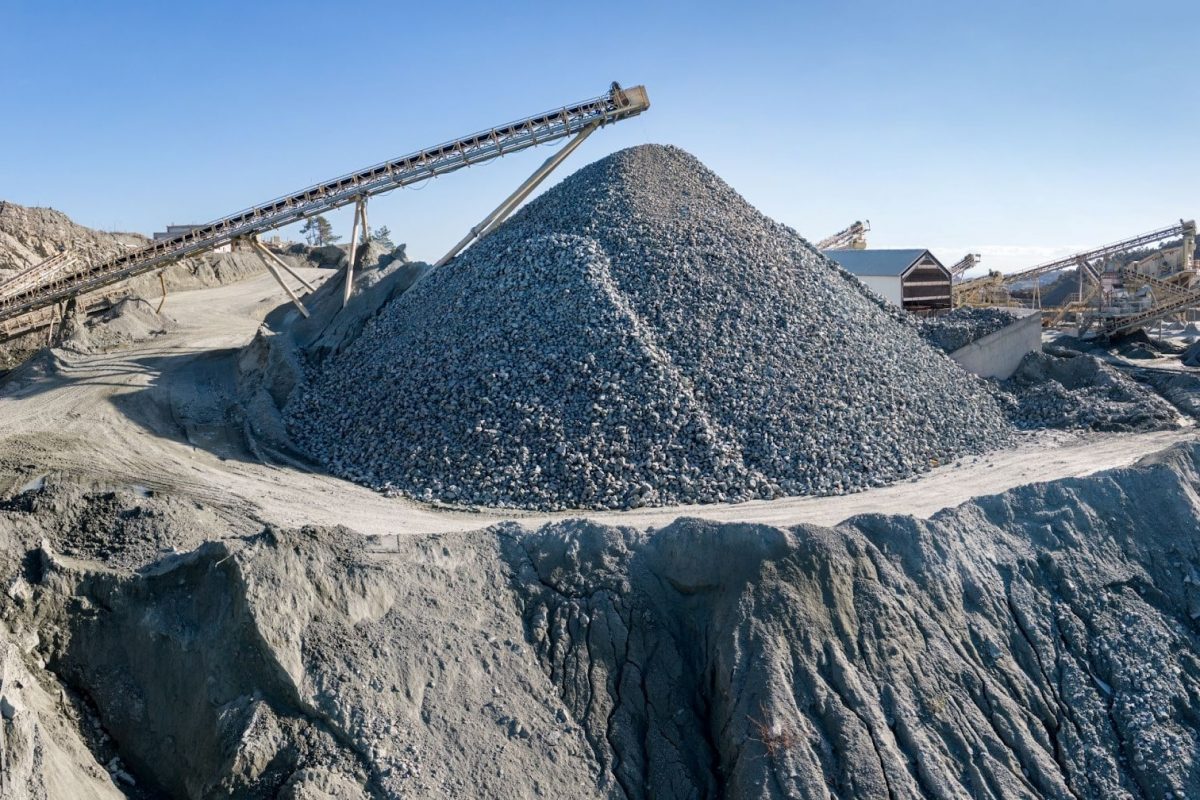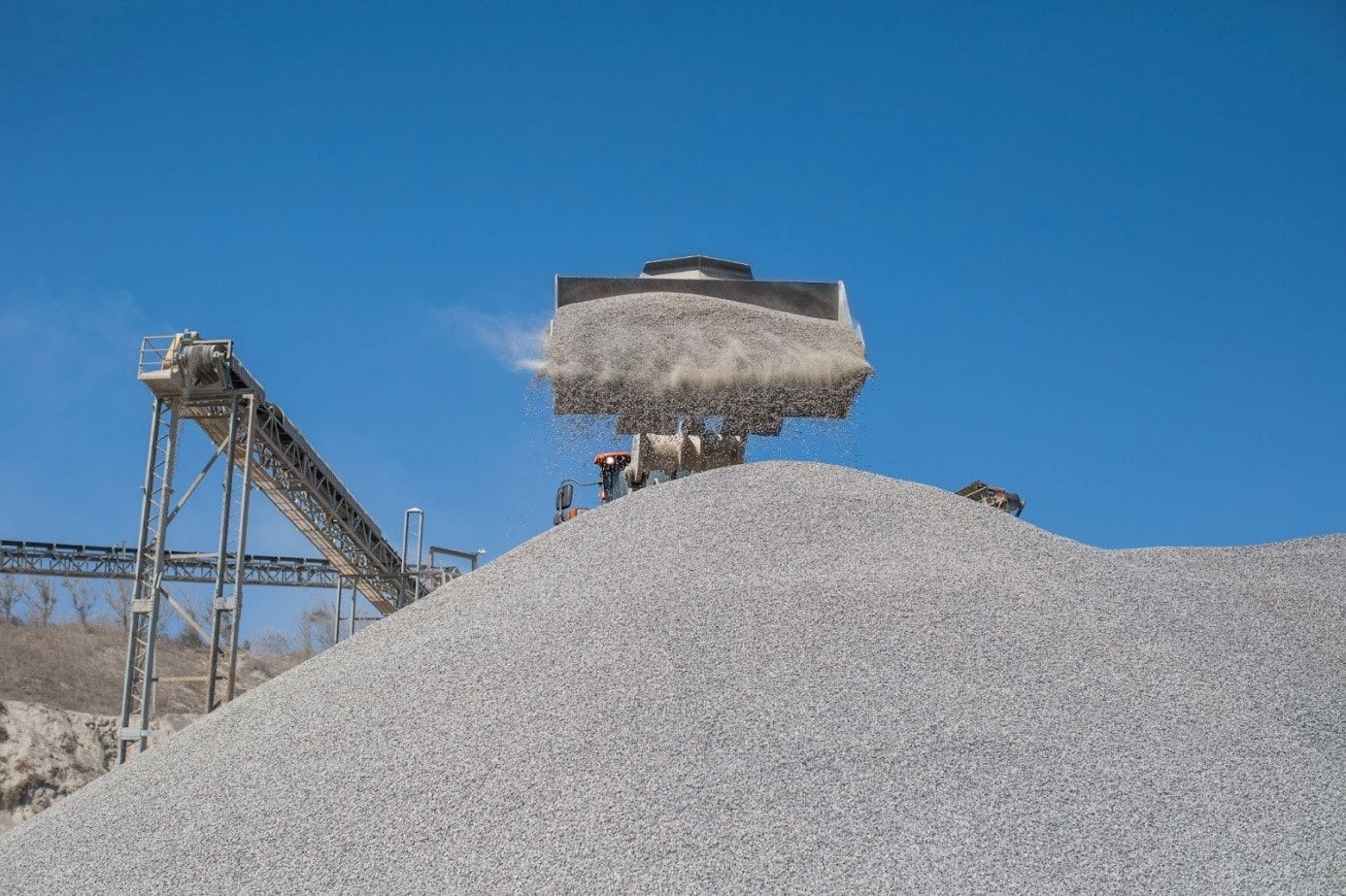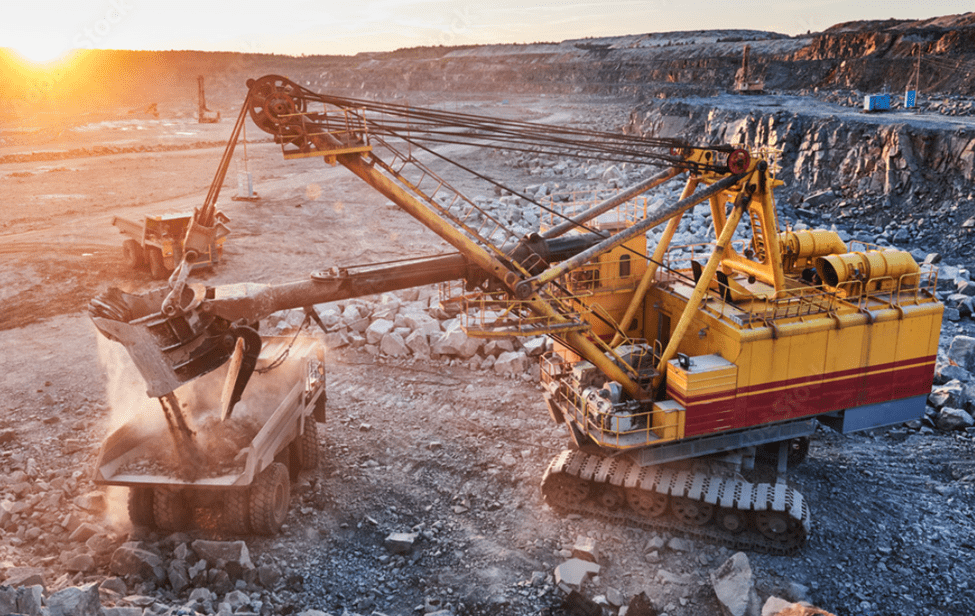Dust control is a critical aspect of industrial operations. Fugitive dust from stockpiles poses environmental and health risks, making it imperative for companies to adopt smart and sustainable dust control measures. In this article, we explore advanced technologies to mitigate airborne dust particles and enhance air quality.
Why Is It Important to Address Dust Buildup In Stock Piles?
Addressing dust in stockpiles is of paramount importance for various reasons, encompassing environmental, health, safety, and operational considerations. Here is a comprehensive list of reasons why proactive dust management in stockpiles is crucial:
- Air Quality Improvement: Dust control in stockpiles contributes significantly to maintaining high air quality standards by minimizing the release of airborne particles into the atmosphere.
- Environmental Protection: Fugitive dust from stockpiles can have adverse effects on surrounding ecosystems, including soil degradation and potential contamination of water bodies. Proper dust control measures help protect the environment.
- Health and Safety: Airborne dust particles pose health risks to workers and nearby communities. Exposure to respirable dust can lead to respiratory issues, allergies, and other health problems. Controlling dust ensures a safer working environment.
- Regulatory Compliance: Many industries are subject to strict environmental regulations that limit the emission of particulate matter. Adequate dust control is essential to comply with these regulations and avoid fines or legal consequences.
- Community Relations: Implementing effective dust control measures demonstrates corporate responsibility and fosters positive relations with nearby communities, reducing the risk of losing our operational social licence.
- Equipment Longevity: Dust settling on machinery and equipment can accelerate wear and tear, reducing the lifespan of these assets. Proper dust control helps maintain equipment in optimal condition, reducing maintenance costs.
- Operational Efficiency: Dust accumulation can hinder operational efficiency by reducing visibility, impacting equipment performance, and creating safety hazards. Addressing dust ensures smoother and more efficient operations.
- Fire Prevention: Certain types of dust are combustible and can pose a fire hazard. Dust control measures help mitigate the risk of fires, especially in industries where combustible materials are present.
- Product Quality: In industries such as mining and construction, dust settling on stockpiled materials can degrade product quality. Implementing dust control measures helps maintain the integrity and quality of stored materials.
- Employee Morale and Productivity: A dust-free work environment contributes to higher morale and increased productivity among employees. It creates a more comfortable and healthier atmosphere for workers.
- Public Image: Demonstrating a commitment to environmental stewardship and health and safety practices enhances the public image of companies. This can be particularly important for attracting customers and investors.
- Cost Savings: Proactive dust control measures, although requiring an initial investment, can result in long-term cost savings. This includes reduced equipment maintenance costs, lower water usage, and avoidance of potential fines.
Impact of Dust Control on Canadian and U.S. Mining
The Best Dust Control Methods in Stock Piles
Dust control in stockpiles is a critical concern for various industries, and implementing effective methods is essential to mitigate environmental, health, and safety risks. Let’s explore the key strategies for optimal dust control.
Dust Suppression Systems
Advanced dust suppression systems are crucial components in the proactive management of airborne dust particles in various industrial settings, particularly in areas like stockpiles where fugitive dust can pose significant challenges. These systems go beyond traditional methods and employ specially formulated agents along with innovative technologies to create a robust defense against dust lift-offs.
The primary goal of advanced dust suppression systems is to establish a robust surface coating on the material within the stockpile. This coating serves multiple purposes:
- Preventing Dust Lift-Off: The cohesive coating created by the dust suppression agent adheres to individual dust particles, preventing them from becoming airborne. This is particularly crucial in windy conditions or during material handling activities where dust lift-off is more likely.
- Long-Lasting Protection: The surface coating is designed to provide long-lasting protection against dust emissions. This ensures sustained effectiveness, reducing the frequency of applications and optimizing the use of dust suppression agents.
- Proactive Dust Management: Instead of reacting to dust-related issues as they arise, the application of specially formulated agents and innovative technologies establishes a preemptive defense against dust problems, contributing to a safer and more environmentally friendly working environment.
- Windbreaks: Erect windbreaks, such as fencing or barriers, around stockpiles to reduce the wind’s ability to lift and carry dust particles. Natural windbreaks like trees or berms can also be effective.
- Stockpile Design: Design stockpiles with slopes that discourage dust generation and runoff. Avoid steep angles that can create dust during loading and unloading operations.
- Moisture Control:Control moisture content in stockpiles. Moisture can help bind particles together, reducing dust emissions. This can be achieved through regular watering or by using moisture-retaining materials.
- Monitoring and Reporting:Establish a monitoring system to regularly measure dust levels and emissions. Use this data to identify areas that require additional dust control measures.
Next-Generation Dust Control Systems
Dust Monitoring Technology
The integration of real-time dust monitoring systems into industrial operations represents a significant leap forward in proactive dust management. These systems play a crucial role in providing immediate feedback on airborne dust levels, empowering industries to take prompt corrective actions and uphold a safe and compliant working environment.
The real strength of these monitoring systems lies in their ability to adapt to the dynamic nature of stockpile conditions. As environmental factors, material types, and operational activities change, real-time feedback enables dynamic adjustments to dust control strategies. This adaptability ensures that dust treatment plans remain effective in diverse circumstances.
The immediate feedback from real-time monitoring not only safeguards the health and safety of on-site workers but also extends to the well-being of communities surrounding industrial operations. By swiftly addressing elevated dust levels, industries demonstrate a commitment to minimizing potential health impacts on both their workforce and the wider community.
Real-time Dust Monitoring Systems
Soil Stabilization
Soil stabilization is a preventive measure that addresses dust at its source. Tailoring stabilization methods to the specific material types in stockpiles enhances the overall effectiveness of dust control, minimizing the need for reactive measures. This proactive approach reduces the frequency of dust control applications and contributes to cost savings in the long run.
Soil stabilization involves the application of specialized products that modify the properties of the soil or aggregate material in the stockpile. These products are designed to enhance cohesion and prevent the disintegration of particles, providing stability even in challenging weather conditions such as rain, wind, or extreme temperatures.
One of the key advantages of using soil stabilization with exceptional surface coating properties is its contribution to the long-term integrity of the stockpile. The protective coating not only provides immediate benefits in terms of dust control but also acts as a durable shield against wear and erosion, contributing to the longevity of the stockpiled material.
Many soil stabilization products are environmentally friendly and biodegradable. This aligns with sustainability goals and ensures that the application of these products has minimal ecological impact. Whether dealing with aggregates, minerals, or other bulk materials, the versatility of stabilization products allows industries to tailor their dust control approach to the specific characteristics of the stockpiled material.
The Impact of Advanced Dust Control Solutions
Advanced dust control solutions play a pivotal role in improving operational efficiency across various industries by addressing critical challenges associated with dust emissions. Let’s delve into how these solutions can contribute to substantial efficiency gains:
Mitigating the Impact of Wind Speed
Advanced dust control solutions factor in wind speed considerations, offering effective measures even in windy conditions. By employing technologies such as ABCDust innovative dust suppression agents and windbreak pannels, industries can maintain dust control efficacy and ensure uninterrupted operations regardless of variable wind speeds.
Optimizing Storage and Material Handling
Efficient dust control solutions contribute to improved storage conditions and streamlined material processing and handling processes. By suppressing dust emissions, these solutions minimize the need for constant cleaning and maintenance, resulting in better-organized storage areas and enhanced operational workflow.
Reducing Water Consumption and Run-Off
Unlike traditional dust control methods that often rely heavily on water, advanced solutions aim for efficiency in water consumption. They utilize technologies that require minimal water volume while still achieving effective dust suppression, addressing concerns related to water scarcity and mitigating environmental impacts such as run-off.
Modeling Flow Dynamics for Precision
The modeling of flow dynamics over stockpiles is a crucial aspect of advanced dust control. Numerical solutions and modeling techniques help optimize the application of dust suppression measures, ensuring precision in targeting areas with varying dust concentrations and height profiles, and the incorporation of windbarriers to prevent wind errosion dust generation.
Overcoming Challenges in Limited Spaces
In industries dealing with limited spaces, such as construction sites or densely packed facilities, advanced solutions offer engineering innovations. These solutions can be strategically deployed in confined areas to maximize dust capture efficiency without compromising operational space.
Effective Haul Road Dust Suppression
Advanced dust control solutions excel in the specific challenges posed by haul roads. By providing effective dust suppression on these routes, these solutions contribute to smoother transportation processes, minimizing disruptions and optimizing operational efficiency.
Beyond Traditional Methods
The limitations of traditional dust control methods, especially during periods of high wind velocity, warm and dry seasons are overcome by the adaptability and effectiveness of advanced solutions. These technologies offer a more reliable defense against strong dust emissions.
Whether it’s addressing dust exposure due to industrial dust intensive process combined with wind, dry and hot weather, optimizing water consumption, or overcoming challenges in confined spaces, advanced dust control solutions provide a comprehensive approach. This adaptability ensures efficient dust capture and concentration control in a wide range of operational environments.
ABC Dust: Smart and Sustainable Dust Control Solutions
ABC Dust excels in smart dust control and soil stabilization services, providing intelligent and sustainable solutions to clients globally. Our mission is clear – to enhance our clients’ productivity and sustainability by providing smart, comprehensive, and sustainable solutions for dust control and soil stabilization.
Our services extend to controlling particulate material from unpaved roads, crushers, stockpiles, and other industrial processes. The DMS-ONE Platform gives you access to innovative products like DMS-DS, DMS-80, DMS-EB, DMS-DS 100, and Eziss Pro. This ensures that the right dose is applied at the right place and time, optimizing performance, reducing costs, and minimizing environmental impact. Furthermore, ABCDust offers windbreak pannels, dry fog systems and dust monitoring devices to keep your dust under control.
ABC Dust is not just a supplier; we are your committed ally in the pursuit of operational excellence, environmental responsibility, and a sustainable future. Join us as we continue to redefine the standards of dust control and soil stabilization worldwide.





